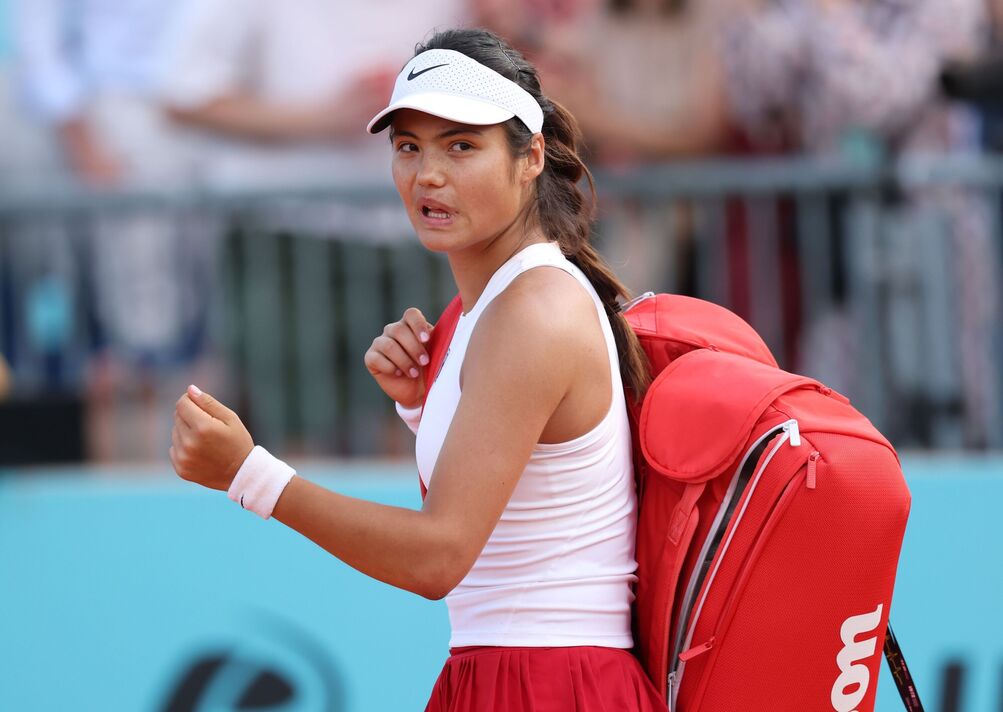
The clay courts of the 2025 Madrid Open have been a battleground for emerging and established tennis stars alike, but for Emma Raducanu, the journey has been a mix of resilience and rediscovery. The 22-year-old Brit, who burst onto the global stage with her stunning 2021 US Open victory, faced a tough exit in the second round against Ukraine’s Marta Kostyuk, falling 6-4, 2-6, 6-2 in a match that showcased both her potential and her struggles on clay. Despite the loss, four-time Grand Slam champion Jim Courier, now a respected voice in tennis commentary, sees this moment as a pivotal opportunity for Raducanu to rebuild without the weight of lofty expectations. His insights, shared during a Tennis Channel broadcast, paint a picture of a young player poised for growth as she navigates a challenging phase of her career.
Raducanu’s Madrid campaign began with promise. In her opening match, she outlasted Suzan Lamens in a gritty 7-6(4), 6-4 victory, marking her first win on outdoor clay since 2022. The triumph was a testament to her tenacity, especially in high-pressure moments, as she improved her impressive tie-break record to 12 wins in her last 13. However, against the 24th-seeded Kostyuk, Raducanu struggled with consistency, surrendering six service breaks in a match that highlighted her discomfort on the slower, slicker surface. “No one’s expecting her to play well on clay, it’s not a natural surface for her,” Courier remarked, emphasizing that Raducanu’s limited experience—only 18 professional matches on clay—sets a low bar for immediate success. Her career record on the surface stands at 11 wins and 9 losses, a stark contrast to her dominance on hard courts during her US Open run.
Courier’s analysis centers on Raducanu’s evolving partnership with coach Mark Petchey, a familiar figure who first worked with her during the 2020 pandemic and rejoined her team informally at the Miami Open earlier this year. That tournament saw Raducanu reach the quarterfinals, her best WTA 1000 result since her Grand Slam triumph, signaling a resurgence after a frustrating 2025 marred by injuries and coaching changes. Petchey’s influence is already evident, particularly in subtle tweaks to her game. “What I do know already is he’s already changed her service motion by adding more shoulder turn there, which is the idea is to try and give her a little bit more disguise and a little more power,” Courier noted, highlighting the technical adjustments aimed at enhancing her serve’s effectiveness. He views Petchey’s presence as a “net positive,” especially given their prior connection, which offers Raducanu a sense of trust amid her history of cycling through coaches—eight in four years, including a brief stint with Vlado Platenik that ended abruptly before Miami.
The clay season, while not Raducanu’s forte, is a stepping stone to her true comfort zone: the grass courts, where she first made waves at Wimbledon 2021, reaching the fourth round as a wildcard. Courier is optimistic about her trajectory, suggesting that the lack of pressure on clay allows her to experiment and grow. “Grass is a surface where she first surfaced, she made the round 16 before she won the US Open at Wimbledon, so for me, it’s about the building blocks for the grass-court season,” he said. He hopes her collaboration with Petchey, even if temporary due to his Tennis Channel commitments, endures through the summer, providing stability as she prepares for Wimbledon, where she’s expected to shine.
Raducanu’s Madrid exit hasn’t dimmed her resolve. After the Kostyuk match, she acknowledged her ongoing learning curve on clay, telling reporters, “I think it’s positive to get through and play two matches on the outdoor clay courts.” Her decision to skip the Billie Jean King Cup qualifiers and a WTA 250 event in Rouen for a training block in Los Angeles sparked debate, with former top-10 player CoCo Vandeweghe expressing surprise but noting Raducanu’s potential on clay, particularly her ability to use her “high heavy forehand” effectively. As Raducanu gears up for the Italian Open and the French Open, her focus is on adapting to the surface’s demands, refining her movement, and building confidence.
At 22, Raducanu remains a work in progress, her career a blend of dazzling highs and navigating the complexities of sudden fame. Courier’s perspective underscores a silver lining: with expectations tempered, she has room to evolve. Whether it’s fine-tuning her serve or embracing the grind of clay, Raducanu’s journey is one of rediscovery, with the grass courts of Wimbledon looming as her next chance to reclaim the spotlight.
Leave a Reply